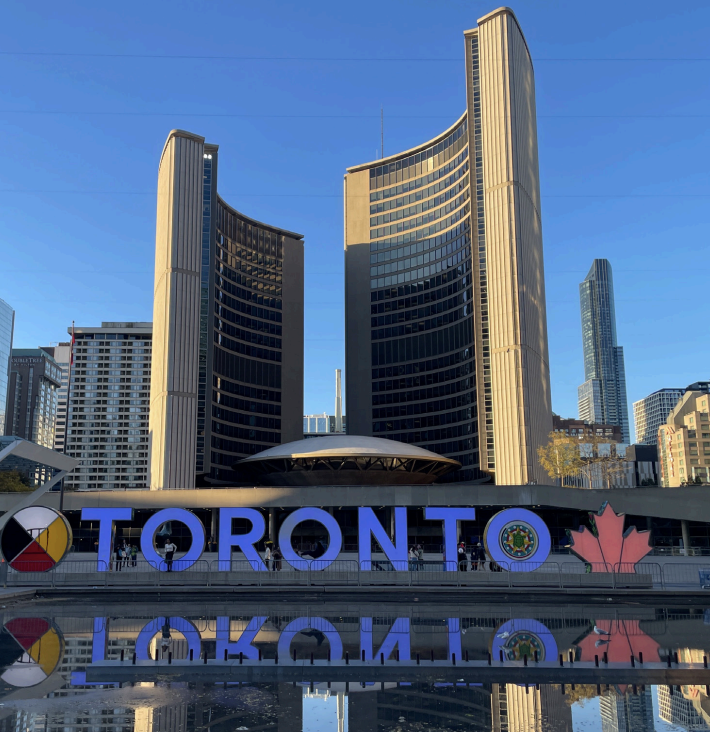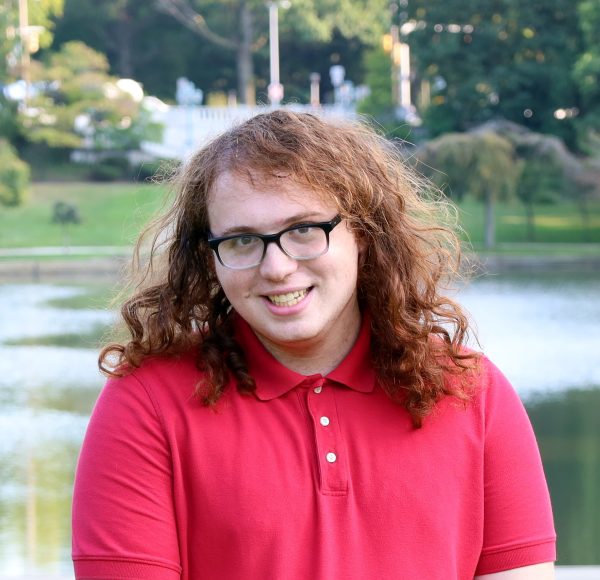It is not every day that Tinkham Veale University Center is packed at 4 a.m. But on Oct. 24, this was exactly the case as Case Western Reserve University students gathered eagerly with passports in hand to start a seven-hour bus ride to Toronto, kicking off the University Program Board’s annual fall break trip—the first international trip since the pandemic, and a testament to CWRU’s international programming.
In Tink, students had their documents checked and were given two custom luggage tags with information from the Office of Education Abroad. Boarding began after a quick welcome presentation. Before the coach reached the interstate, the vast majority of students on my bus were fast asleep, using makeshift pillows that even included a ball of yarn.
As dawn broke, the three chartered buses stopped at a rest stop in the Cattaraugus Reservation—part of the Seneca Nation of New York—where infamously only two bathroom stalls were available. The rest stop was a timed wake up call to ensure that students were fully awake and alert at the Peace Bridge: an uneventful border crossing that became the symbolic highlight of the trip.
The city of Toronto itself was an absolute delight and one of my favorite cities I have ever visited. On the first day, my friends and I wandered around Chinatown and Dundas Street, a main road lined with large department stores, malls and a central square with billboards that reminded me of Times Square in New York City.
The next day, many students participated in the one excursion that UPB provided, a trip up the CN Tower at a heavily reduced price. Here, students spent nearly an hour wandering around the observation decks, taking photos out of the floor to ceiling windows and grabbing a bite to eat. Later that day I decided to go out on my own adventure, visiting Toronto Island Park and walking the length of the PATH network: a series of tunnels and shopping malls that connect Toronto’s downtown with the waterfront and City Hall. The sheer length of this system astonished me, though the sight of shuttered mall facades was all too familiar. I also got the opportunity to wander down Graffiti Alley and view Toronto’s impressive street artist scene.
The last day I spent adventuring around, visiting the Casa Loma—the mansion of an eccentric industrialist turned Major-General in the first world war—and the George R. Gardiner Museum of Ceramic Art. Afterwards, we left Toronto and stopped in Niagara Falls, Ontario for a brief rest stop to run to a convenience store while grabbing photos of the falls from the Canadian side. Since it was dark out, we got to see different colored light displays, including ones in the colors of the United States and Canadian flags. On the trip home, a final rest stop was taken in Erie, Pennsylvania, where an abnormal amount of gas station hot dogs were purchased and consumed by all.
While exploring the city, what struck me the most was how modern Toronto is. Most of the skyline is a mix between brutalistic and modern glass structures, with the odd colonial historical building in between. Their public transport system became an unusual highlight for me and my friends: Trams crossed the city’s downtown grid, with three subway lines that extended into the suburbs. It provided a different taste of urbanism than the car centric Cleveland.
Toronto is also home to some incredible food. Of course, there was plenty of poutine. This was my first time trying—and falling in love with—the gravy, cheese curds and french fries combination. My friends and I also consumed hand crafted rice balls, many delightful brunch foods and items from the coffee chain Tim Hortons.
Prior to this trip, I had not traveled with UPB. So, I was incredibly surprised by the amount of freedom and independence we had on the trip. Instead of acting like chaperones on an eighth-grade field trip to Washington, D.C., UPB was merely our method of transportation and hotel room booking service. UPB members were responsible for ensuring all students made it onto the buses, but beyond that we only occasionally saw the UPB members out and about, experiencing Toronto with us.
This independence gave students a real motivation to explore and make new connections. For example, one day when I was at Casa Loma, a man pointed at my CWRU sweatshirt and said, “Case Western…right?” Just like that, I bumped into an alum from 2012, striking up a brief conversation about life and shared memories of University Circle.
Personally, I used this independence to do every political science nerd’s favorite activity while traveling: going to local legislative bodies. In Toronto, I took time to tour and sit in on a debate inside the Legislative Assembly of Ontario. For me, it was a great way of seeing not only how other democracies debate issues, but also hear about what non-Americans think is going on inside the U.S. I was asked twice to explain to my Canadian Tour Guide what was happening in our current political scene.
Such experiences allow us as students to not only serve as ambassadors for CWRU, but also to gain key cultural competency skills in being able to understand others. For example, since Canada is a bilingual country, students were also exposed to another language: French.
In my view, CWRU has been trying to expand its presence in the study abroad and international education world. They are actively trying to get more students to have experiences that take them outside of the U.S. While not an actual study abroad trip, UPB’s trip is a direct result of the university’s emphasis on expanding its global presence.
CWRU has so many great international opportunities for students, even if they are essentially school-sponsored adult field trips. This trip was not only incredibly cost efficient, but a great way to break out of the University Circle bubble. I would do it again, just for the poutine.



